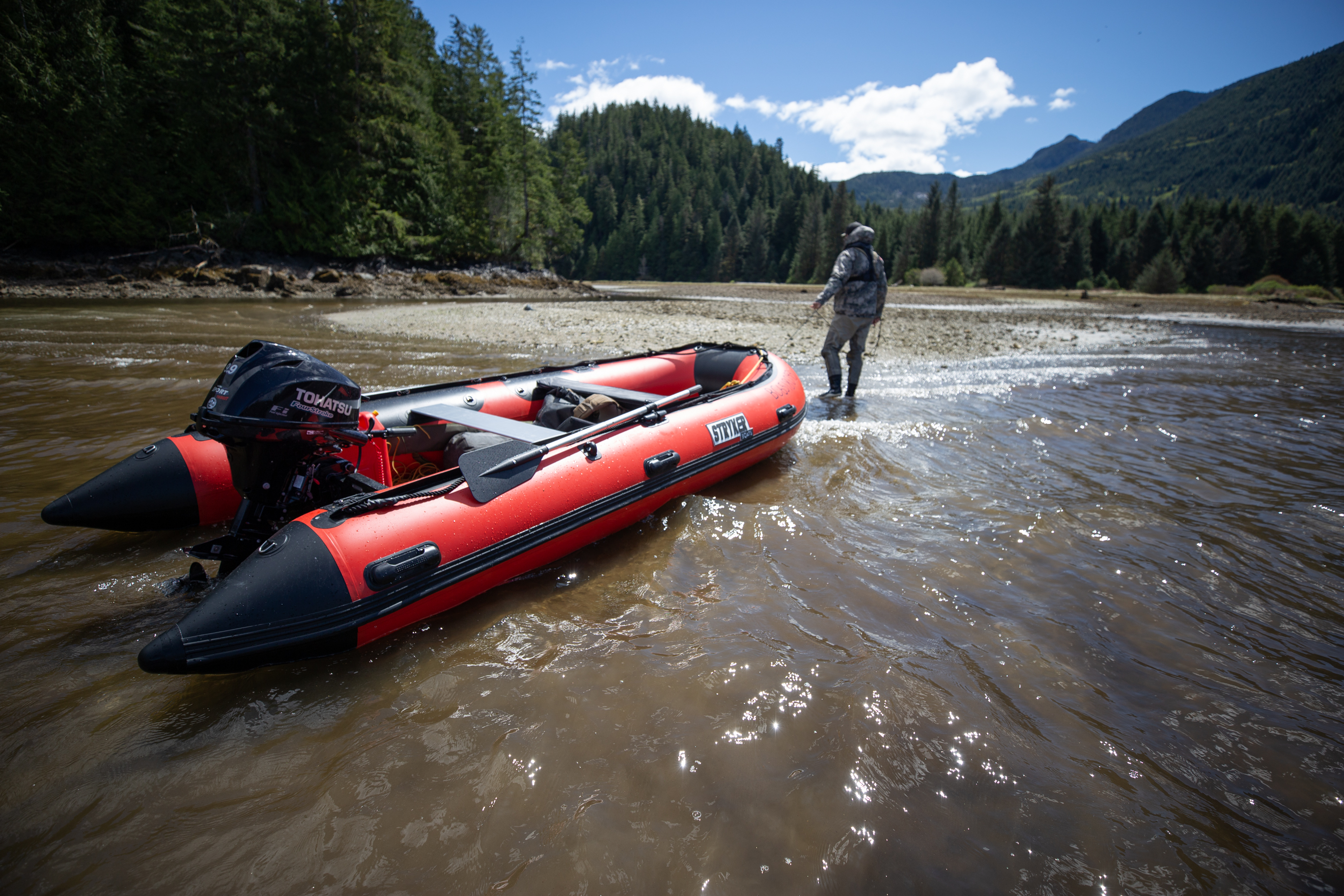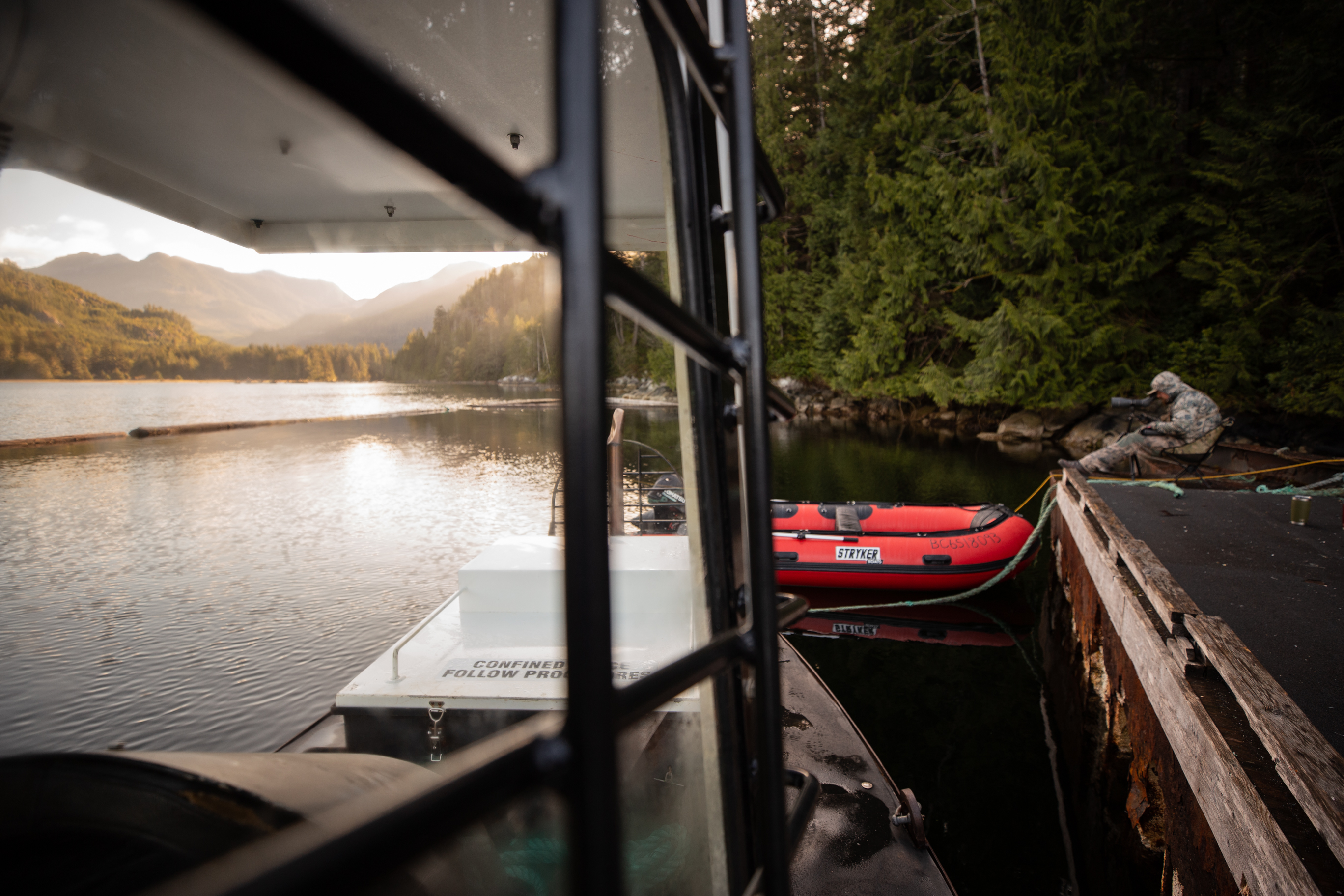Mountain hunting, in its truest sense, is synonymous with the wilderness. The game pursued is cherished due to their remoteness, the inhospitable nature of their habitats for humans, and the lack of access into these habitats. As such, the folk that generally choose to hunt in the mountains are ever searching for alternative means of access. For hunters chasing mountain game in the Northwest Territories, Yukon, Alaska, and British Columbia, the two most common modes of transportation are backpacking from a road and floatplane access. Outfitters favour the latter, with a mix of horses and backpacking, included. While there is a small, but fervent community of residents that own a horse string for hunting, the majority of them favour hiking off the road as it is much more cost effective. With this in mind, it stands to reason that there are vast tracts of land that typically do not see hunting pressure, outside of the occasional guided hunt. And there is nothing better than finding new ways to access low-pressure hunting areas.
British Columbia has approximately 25,725 kilometres (15,985 miles) of coastline, the majority of it punching into the Coast Mountains. Add in the lakes and navigable rivers, and there are millions of gallons of access options for those who are determined. Boats have long been a part of the culture of hunting, and while they do open up a lot of country to the hunter, they often come with their own set of problems. They are costly, cumbersome, and many of them require trailers and adequate boat launches. Portable options such as canoes and john boats are generally restrictive in terms of stability, load capacity, and ability to tackle bigger waves and bad weather.
Unsurprisingly, inflatables are among the top choice for hunters that need a boat, as they can be deflated easily into a compact, manageable size. Raft hunting can be extremely effective, particularly for moose and caribou. Ultralight options like the Alpacka Raft have becoming increasingly popular for hunting, due to their low-weight and ability to be rolled up and strapped to a backpack. I know folks who use them while hunting moose upriver from a fly-in lake, allowing them to hunt further out of camp then they would if they were packing moose out on their backs. Fantastic as they may be, pack rafts still don’t offer the versatility that many hunters are looking for, especially those living in areas with larger rivers, lakes, and ocean inlets.
This is where the traditional inflatable boat comes in, often referred to informally as a “Zodiac” after the popular boat maker. Having hunted, fished, and lived on Vancouver Island for four of the last six years — and on the west coast for all of them–, the concept of a small, relatively inexpensive, versatile boat capable of the salt chuck or the lake has consumed more brain time than I care to admit. The fact that I’m in the mountains guiding from mid-July through mid-October makes it hard to justify, as that covers the months I would see the most use out of a boat. As well, the issue of storing a boat and trailer is always front of mind, particularly during the months that I am gone.
Regardless, every year I hunted the coastal areas of Vancouver Island from logging roads, hiking de-activated ones and glassing bears in the cuts or feeding down grassy roads. Often I would spot them out on the estuaries, with no effective way of reaching them — daydreaming about slipping in on a big old boar feeding on the grassy flats. This spring I was fortunate enough to find some time late April to get out on the coast for bears, and borrow an inflatable boat from Adam Janke, the Journal’s Editor-in-Chief. A good friend and member of the JOMH team, Peter Gutsche, and I set off for four days of cruising a west coast inlet for bears — a spot that I hunted often when I still lived on the island, though never with a boat.
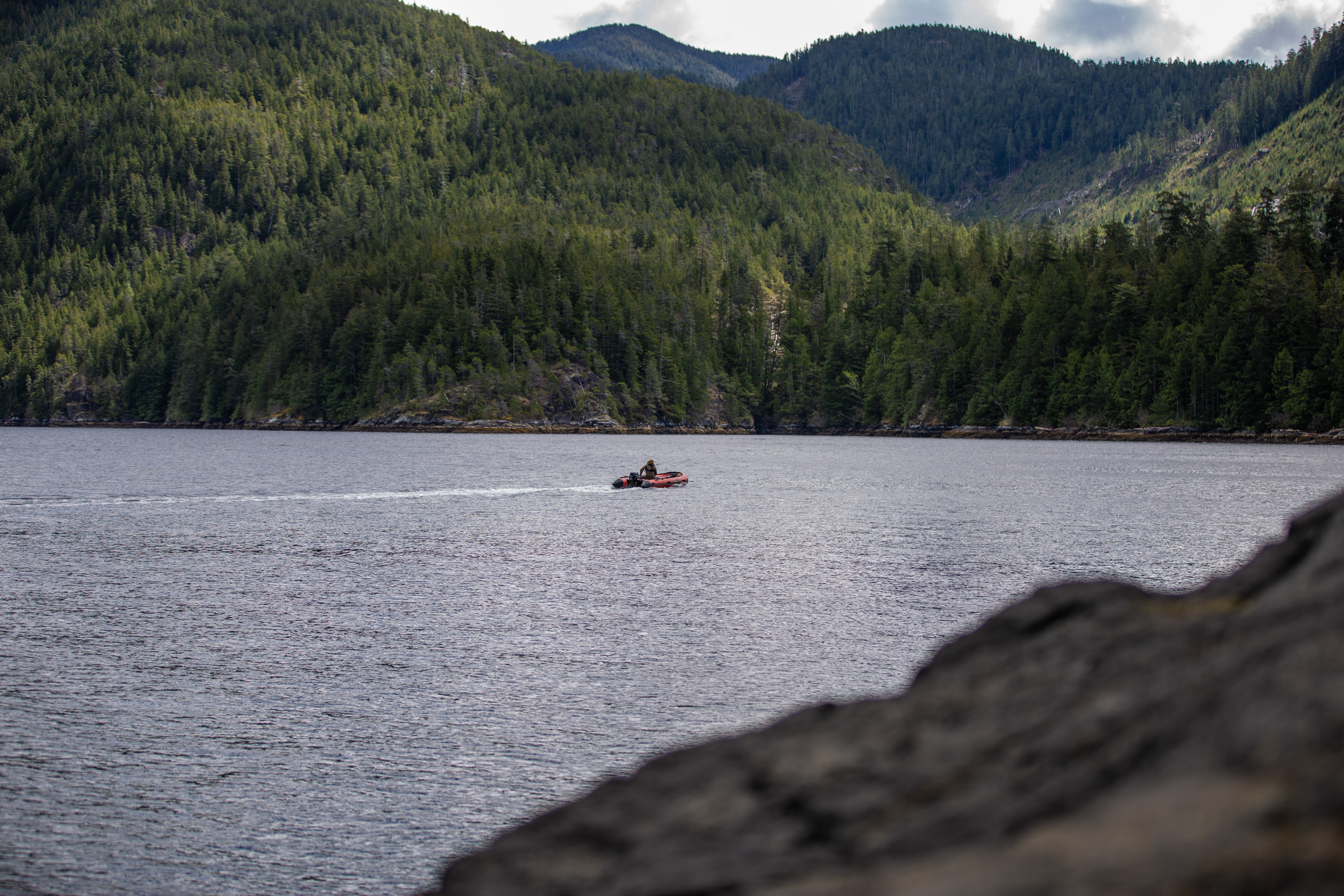
Photo: Peter Gutsche
I won’t delve into storytelling about the hunt, apart from saying that we saw nine bears on the trip, two being large boars on the estuary in question. Arguably as exciting for me was getting to test out the Stryker Boats Ranger LX 420 that we had along with us. I knew a little bit about the Stryker prior to getting my hands on it, as Adam had taken it on a late October moose hunt this past fall, and I had looked over them at the local “Sportsman’s” shows before. Stryker Boats are also based out of Aldergrove, BC — about 45 min SE of me.
The LX 420 is the largest of their Ranger line, only surpassed in size by the Hunter Jet 500, and has a great blend of portability and utility for the avid outdoors person. Though assembly is dead simple, we’d never set the boat up before, so Pete and I looked over some of Stryker’s instructional videos on the ferry ride to Vancouver Island. It is worth noting that the instruction manual does not cover the specific PSI recommendations of the bow and gunnel tubes, or for the floor, so you’ll have to look those up online.
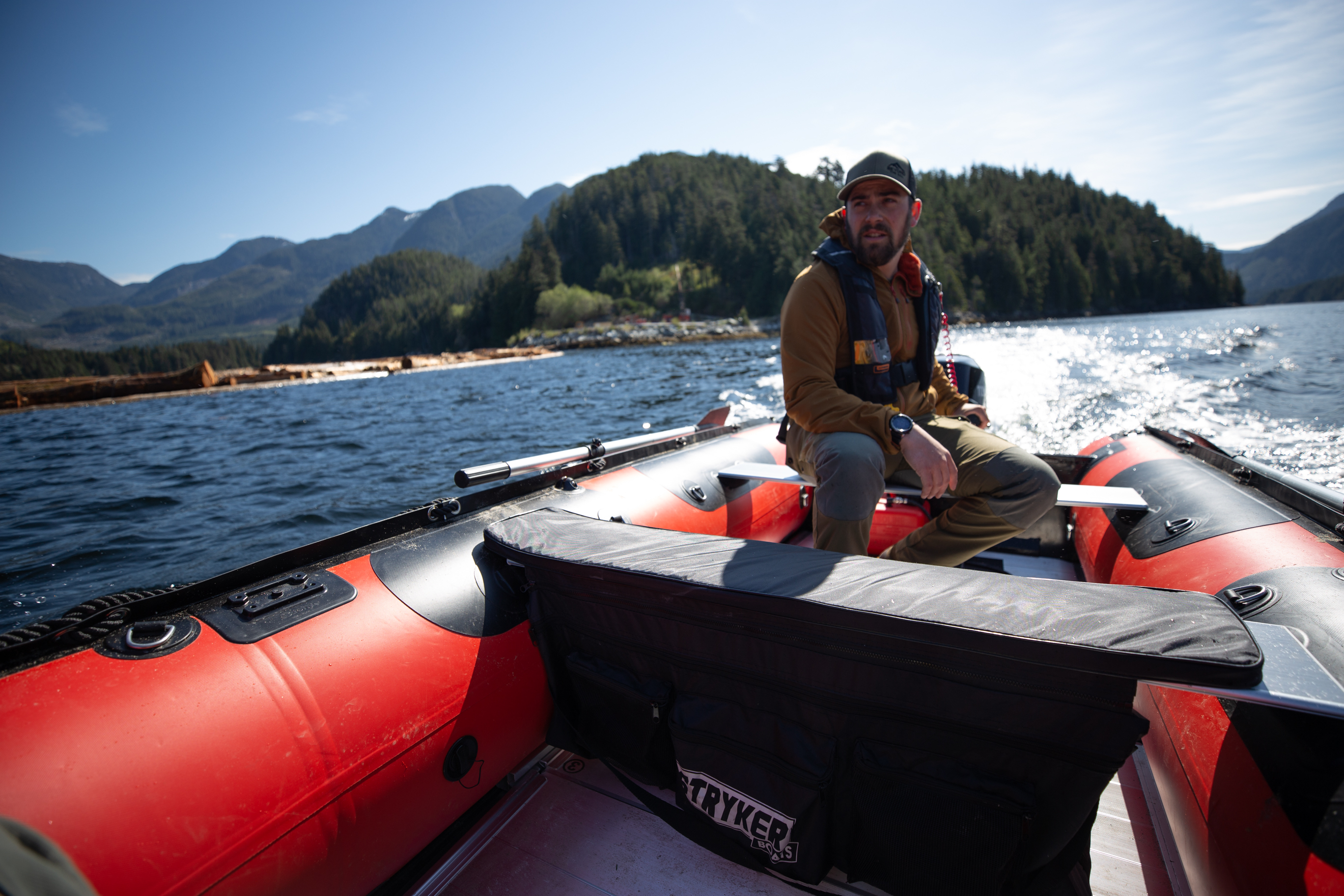
Photo: Peter Gutsche
The boat essentially comes in two pieces, the hull/transom, and the aluminum floor/runners. The hull is constructed from rugged PVC tubes that are thermowelded and sectioned into four separate air chambers. The transom, a single piece of aluminum, is sturdy and also reinforced with thermowelded patches around the contact points. This was a nice feature, as transoms are often the weakest link on inflatables — wood or fibreglass that rot over time. The boat itself is manageable when deflated, weighing 201 lbs between the boat and floor bags. Inflation is quick with the electric pump they sell, and the aluminum floor comes in five pieces, snapping together with ease, bolstered by aluminum runners. The whole package is small enough to easily fit in the bed of a pickup, with plenty of room for coolers, packs, crab traps etc, while still being capable of set up in a short period of time. In our case, we inflated the boat on the flat of an old coastal log dump and carried it the short way down to the saltwater.
The long narrow inlets of the west coast can be fraught with wind and waves, and in these conditions, inflatable boats really come into their own. My past experiences cruising coastal inlets for grizzly and goats were rarely what I would call a smooth ride, and my inexperience operating boats in the salt doesn’t exactly inspire confidence. Our conditions were a far cry from the catabatic winds of the North Coast, but they had enough chop that I wouldn’t feel good about running a small aluminum skiff in them. The Ranger felt stable and safe, regardless of the direction we travelled across the inlets small whitecaps. The stability of these boats cannot be overlooked, and not only as a “safety feature” for shitty conditions. When slipping in and out of the boat in shallow estuaries with waders, or loading the boat down with heavy, cumbersome loads — moose quarters come to mind — it is a welcome convenience.
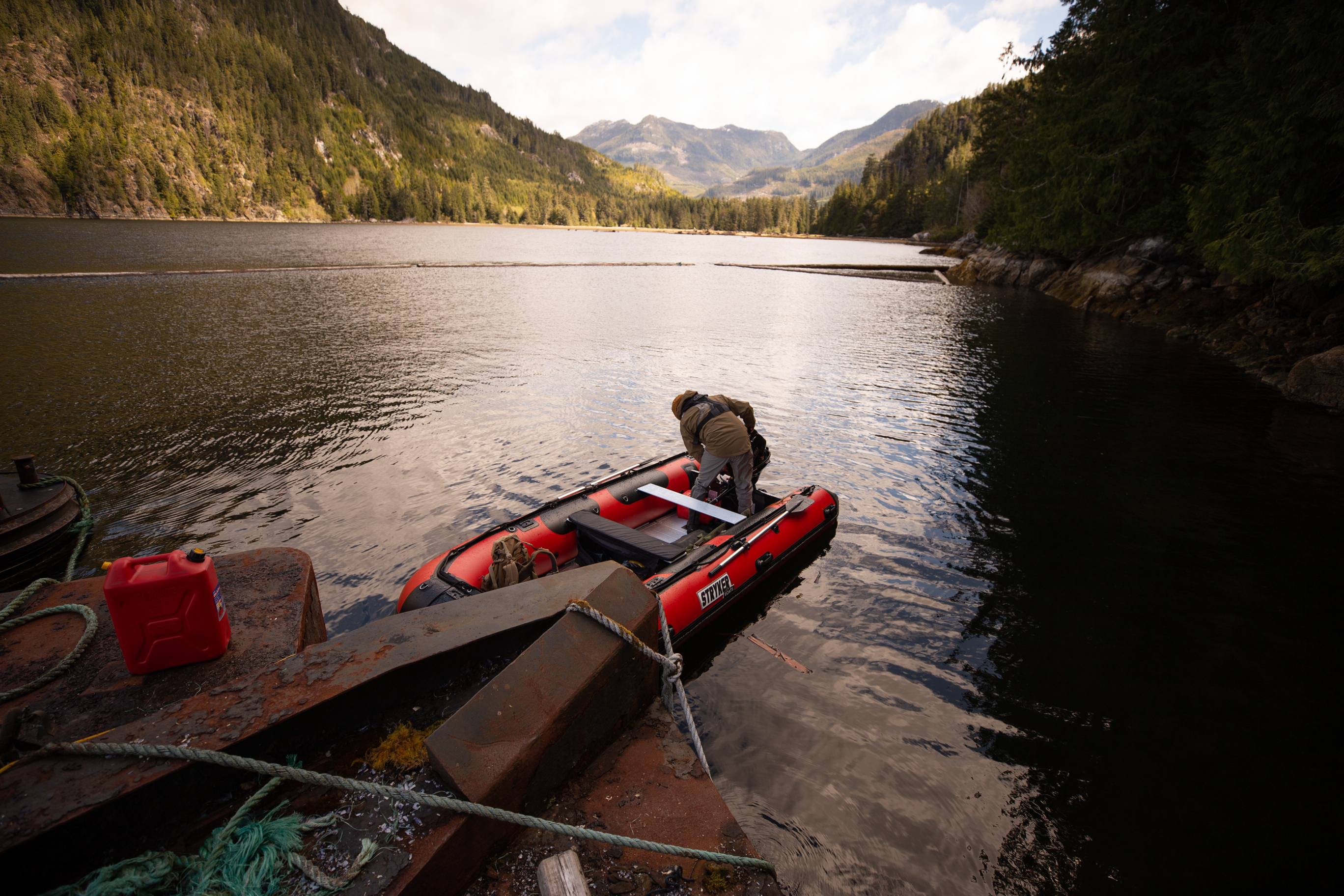
Photo: Peter Gutsche
For the hunter, inflatables are the best bang for your buck when you are focused on carrying loads. This 13’7” model has a max load rating of nearly 2500lbs, making it more than capable of hauling meat, gear, and bodies on a fly-in moose hunt. In fact, I would wager you’d run out of room long before you hit the weight restriction. The LX 420 has a listed carry capacity of 10 people, although I wouldn’t want to pack more than four adults in myself. The boat is rated for a 40hp motor, while Adam’s Stryker is set up with a short shaft Tohatsu 20hp. This proved adequate for our time in the more open stretches of the inlet, though I’d be inclined to go the outboard jet-drive route myself for added versatility running rivers, estuaries, and shallow lakes without fear of prop damage. Stryker does offer a Jet line of inflatables in their “Hunter” series, with hulls designed with Jet motors in mind.
Stryker Ranger LX420 Specifications
Overall, Pete & I were both impressed with the versatility of this boat, agreeing that it would be on the gear list to consider in the future. Fishing, family camping, hunting the inlets for bears, float plane fly-in lake hunting for moose and caribou, even the ability to access remote mountain ranges off long lakes and reservoirs. It stows away in your vehicle in transit, or — for folks like myself living without a garage — in your home without needing a trailer or excessive room for it.
Given the nature of guiding work and some of the hunts I go on personally, I often lean towards highly specialized gear — purpose-driven but reliable. Certain tools do not fall under that category and ultimate utility would be my main concern, were I looking to purchase a boat. If you are considering a boat for hunting, fishing, and general recreational use the Stryker is a great option. At $3500 CAD (motor not included), it’s also very well priced, both for an inflatable of this size and a boat that’s this versatile. This boat definitely fits the bill for multi-season, all-weather, recreational use where space and weight hauling is of greatest concern.
As for the bear hunting, there are a couple of good boars out there waiting for a rendezvous next spring, and you can be sure the Stryker will be coming along for the ride.


